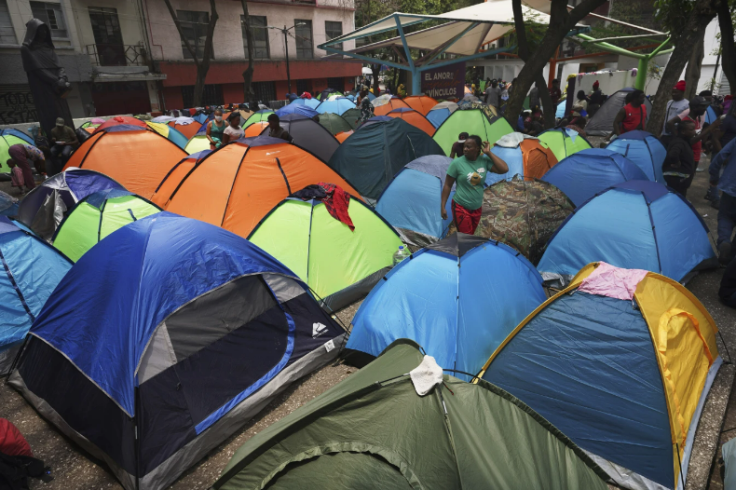
SEATTLE - Some neighborhoods throughout Mexico City continue to hold large encampments of migrants seeking asylum in the United States.
Until late August, the Mexican capital was the southernmost point from which migrants could register to request an appointment to seek asylum through the U.S. Customs and Border Protection's mobile app known as CBP One. The geographic area where the app is available was expanded to include Mexico's southernmost states since, but many migrants who made the journey before then have stayed in the capital city while they wait to get an appointment.
Many have settled in neighborhoods such as La Merced and Vallejo, where they live for weeks and even months in crowded, makeshift camps with poor sanitation and deplorable living conditions.
Andrew Bahena, coordinator of the Coalition for Humane Immigrant Rights of Los Angeles, or CHIRLA, said that up until late 2023, many migrants were kept by Mexican authorities in southern cities like Tapachula. But due to the CBP One's geographic limits until recently, many migrants have made the journey up north and settled in Mexico City.
In La Merced, Bahena said that "up to 2,000 migrants have been living here in the last year," and that about 40% of the encampment's population are children.
In the neighborhood of Vallejo, just a few miles from the historic city center, migrants have set up encampments that can host up to 200 families.
The increasing number of migrant encampments has created tensions between asylum seekers and neighbors. In April, residents of the Juárez neighborhood blocked some of the city's busiest streets demanding the encampment, which was home to more than 400 people, be cleared.
Eduardo Ramírez, one of the protest organizers, said it is the government's job to "help these poor people that come from their countries in search of something better and have the bad luck of traveling through Mexico."
In Mexico City, unlike U.S. cities such as New York and Chicago who have also seen a huge increase in its migrant population, shelter capacity is limited.
"They sleep on the streets because the government has abandoned them," Ramírez added.
Since the Biden administration announced significant restrictions on migrants seeking asylum, CBP One app became one of the only ways to request asylum at the Southwest border.
During the 2023 fiscal year, CBP reported more than 2.4 million encounters with migrants along the U.S.-Mexico border, but since Biden's restrictions went into effect in June, the number of migrants crossing the U.S. border illegally has fallen significantly.
In July, CBP recorded 56,408 encounters between ports of entry along the Southwest border, making it the lowest monthly total since September 2020 and 32% lower than the encounters recorded in June of this year.
Since the CBP One app was launched in January 2023, more than 765,000 people have scheduled appointments to request asylum, although U.S. agencies can only handle 1,500 appointments per day.
© 2024 Latin Times. All rights reserved. Do not reproduce without permission.











